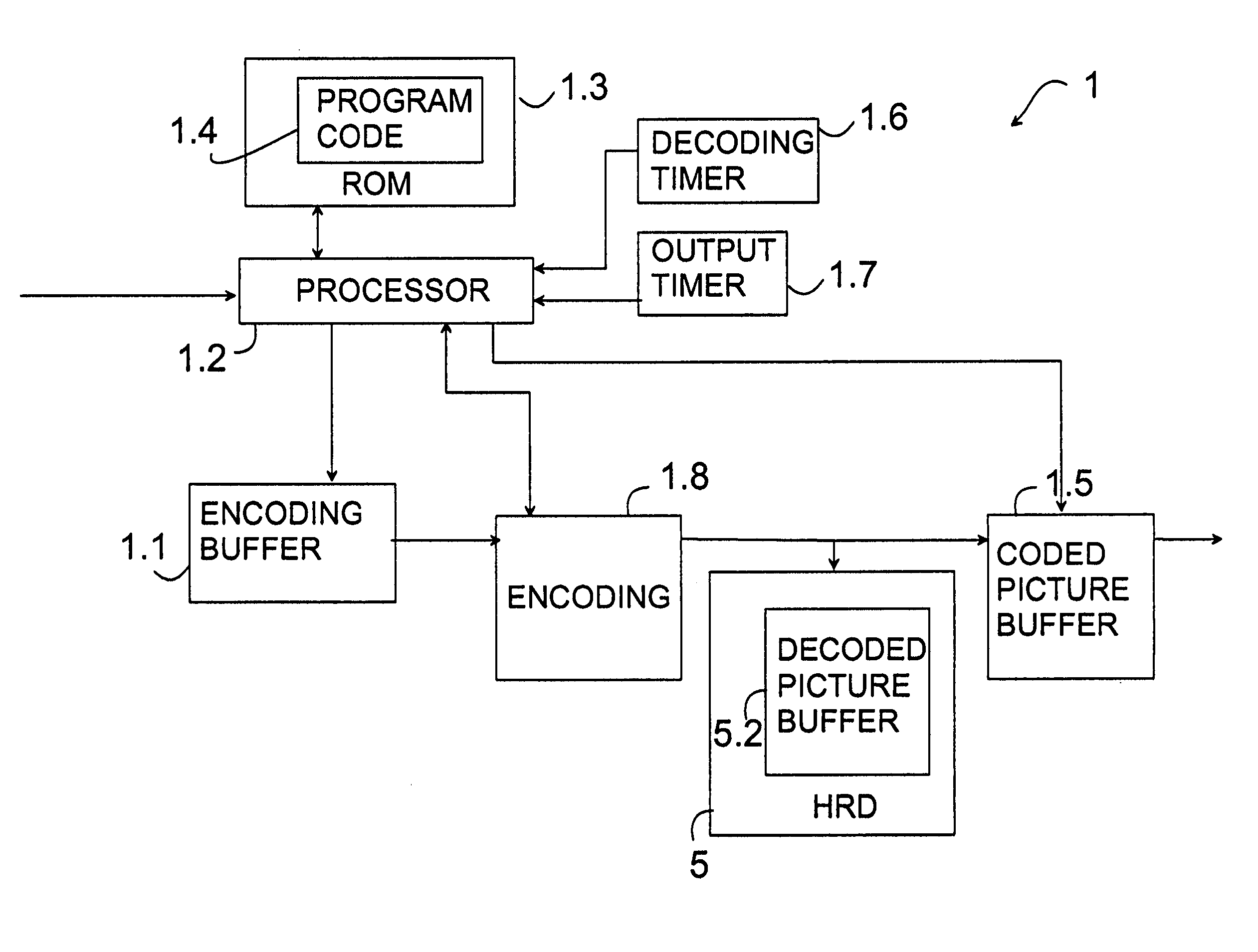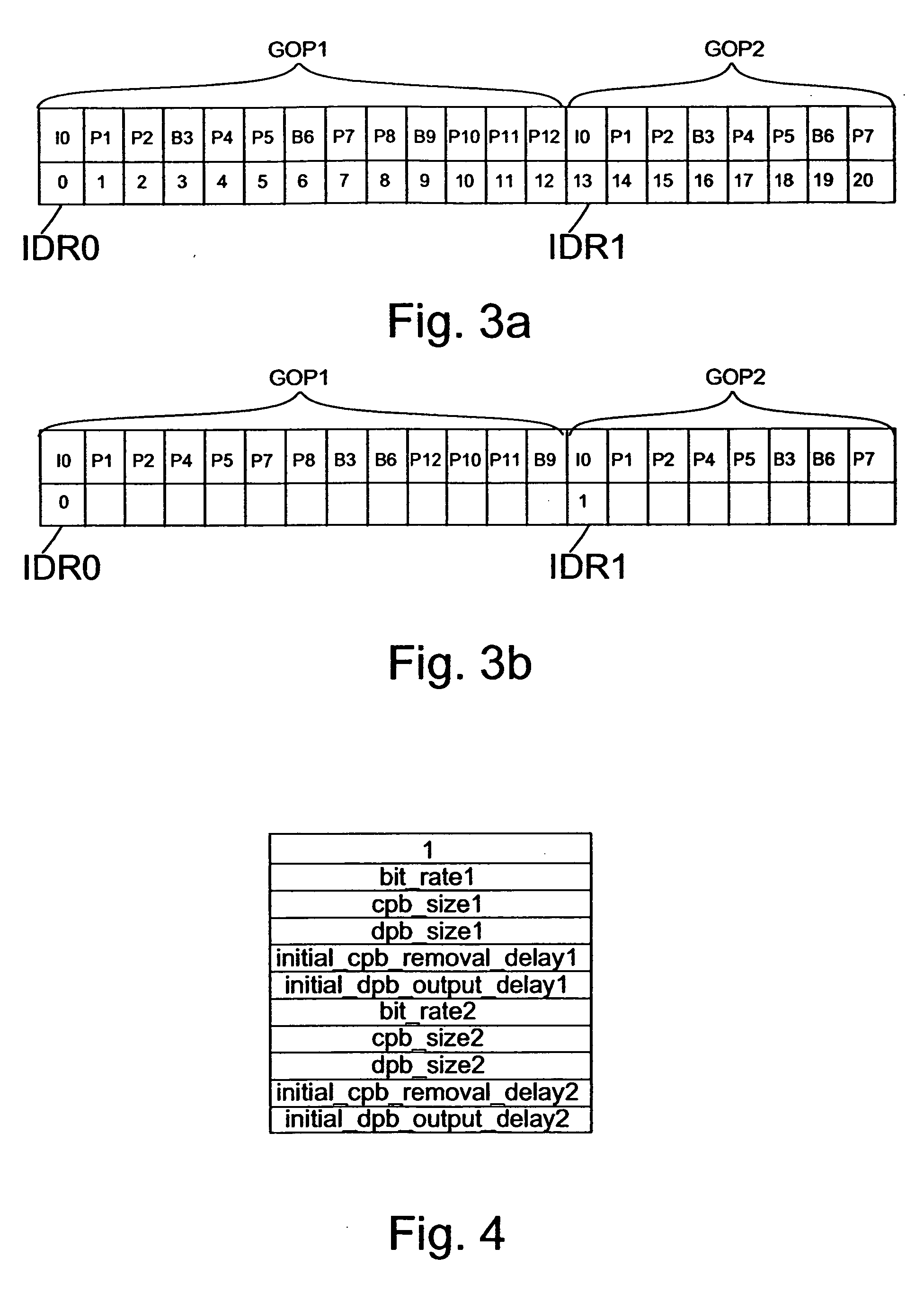Video coding, decoding and hypothetical reference decoder
a hypothetical reference decoder and video coding technology, applied in the field of video coding and decoding processes, can solve the problems of unoptimized hrd and the problem of becoming more cumbersome, and achieve the effect of improving the operation of the hypothetical reference decoder
- Summary
- Abstract
- Description
- Claims
- Application Information
AI Technical Summary
Benefits of technology
Problems solved by technology
Method used
Image
Examples
first embodiment
[0083] If the invention is implemented and if video editing operation such as insertion or removal of coded video sequences to / from a bitstream is done, the temporal reference (picture_distance in AVS-M) needs to be updated for each picture in some coded video sequences.
second embodiment
[0084] If the invention is implemented and if video editing operation such as insertion or removal of coded video sequences to / from a bitstream is done, the temporal reference (picture_distance in AVS-M) does not need to be updated for any picture. Instead, only the temporal gap (denoted as picture_distance_gap to be used in AVS-M) value of the one or two IDR pictures whose preceding picture in output / display order has been changed need to be updated.
[0085] Next, the operation of the decoder 2 according to an embodiment of the present invention will be described. The decoded picture buffer 2.1 contains memory places for storing a number of pictures. Those places are also called as frame stores in this description.
[0086] The decoder 2 starts to decode the encoded pictures beginning from the picture that first enters the coded picture buffer. When the picture is decoded it will be stored to the additional frame store or the decoded picture buffer. The picture to be decoded can either...
PUM
 Login to View More
Login to View More Abstract
Description
Claims
Application Information
 Login to View More
Login to View More - R&D
- Intellectual Property
- Life Sciences
- Materials
- Tech Scout
- Unparalleled Data Quality
- Higher Quality Content
- 60% Fewer Hallucinations
Browse by: Latest US Patents, China's latest patents, Technical Efficacy Thesaurus, Application Domain, Technology Topic, Popular Technical Reports.
© 2025 PatSnap. All rights reserved.Legal|Privacy policy|Modern Slavery Act Transparency Statement|Sitemap|About US| Contact US: help@patsnap.com



